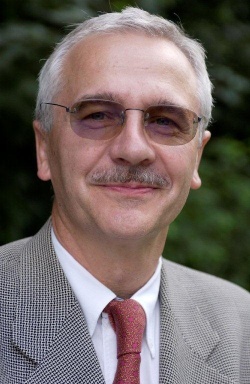Unnerved by denervation
Cardiologists are increasingly concerned about patients with persistent hypertension demanding a new technique, in the absence of clinical proof of its long-term benefit. As more related devices are launched, John Brosky reports on the procedure, drawbacks, and a potential €2 billion market.

If you are one of the six million people in Europe who suffers from persistent hypertension, a new miracle cure will be hard to resist. The minimally invasive procedure called renal denervation seems relatively safe and promises immediate relief from high blood pressure that is resistant to treatment with medications.
But, you are going to trouble your cardiologist who is still waiting for the clinical proof that in the long term this procedure is actually good for your health. The current treatment for hypertension is first to curb unhealthy lifestyle choices. The second, and equally unpleasant step, is to prescribe as many as three different pills, all of which have disagreeable side effects. If, after all this, your systolic blood pressure does not stay below 160 millimetres of mercury you have resistant hypertension and will want to consider this new approach. Simply put, a physician runs a wire from the groin through the femoral artery placing the tip in the main artery of your kidney. Turning on a heating device destroys jumpy nerve endings that are continuously sending signals to the brain to increase the blood pressure. This method of heating tissue inside the body is frequently used in many outpatient surgeries, such as burning away tumours. So, the effects are controllable and safe. Which is one reason why so many medical technology companies have re-engineered existing equipment and are filling the pipeline with new renal denervation devices. The other reason is that there are, potentially, 12 million patients to be treated in Europe and North America.
Three new devices were approved for sale in Europe in February 2012, another was approved in May and many more are on the way. Companies with devices already on the market include three major players in cardiology Medtronic, St Jude, and Covidien Vascular as well as two specialists ReCor Medical and Vessix Vascular. Optimistic Wall Street analysts are already estimating a market potential for these companies of almost €2 billion by 2020.
This commercial pressure is moving faster than clinical evidence that the procedure has real benefits, like a tidal wave. Fewer than 300 patients undergoing the procedure have been studied, and all of them in clinical trials paid for by manufacturers. Fewer than 10% of these patients have been followed for three years or longer. Long-term effects on the kidney, the damage to the renal artery, and the potential for re-nervation, or nerves recovering and creating new problems, are all unknown. ‘Patients are driving the delivery of this procedure and these patients will be knocking on your door,’ warned William Wijns MD, former president the European Association of Percutaneous Cardiovascular Interventions (EAPCI) leading a panel discussion on renal denervation in May 2012 at EuroPCR, his society’s annual meeting. Jean Renkin MD, a cardiologist at UCL St Luc University Hospital (Brussels, Belgium) was also cautious. ‘We are told this procedure drops blood pressure to a better level, yet these patients do not drop out of the hypertension category,’ he said. ‘We are told we will see a 10mm or 20mm drop in blood pressure. Is this clinically relevant?’ ‘What we do not want to see is patient auto-prescription, and then a cardiologist who agrees to do the procedure two days later,’ Dr Renkin said. ‘We are inducing an irreversible effect on the kidney,’ said Pierre François Poulin MD, Professor of Medicine and Hypertension at Hôpital Européen Georges Pompidou (Paris). ‘We do not even know if the denervation we performed was partial or complete.’ ‘What is the durability of the effect?’ he asked. For cardiologists, renal denervation is again pushing the fine line between an evidence-based approach to medicine and a willingness to experiment with innovative new treatments.
In 20 years the practice of interventional cardiology, where procedures can be performed without invasive surgery thanks to a guide wire, has exploded moving rapidly from opening blocked arteries with angioplasty to reinforcing artery walls with metal stents, and now to replacing aortic valves. The European Association for Percutaneous Cardiovascular Interventions (EAPCI) has grown 10 times to 4,000 members in just the past six years. New technology from industry has been the driver of this growth with clinical evidence trailing slowly behind.
In January 2012 the UK’s National Institute for Clinical Excellence (NICE), Europe’s most credible health technology assessment panel, issued cautious guidelines for renal denervation, encouraging the procedure be performed primarily in the interest of building clinical evidence. ‘The limited evidence suggests a low incidence of serious periprocedural complications, but there is inadequate evidence on long-term safety,’ said NICE, adding that patients should be forewarned. Isabelle Durand-Zaleski MD, the director for clinical research and health economics with the French Public Health Service, weighed in for the debate among cardiologists at EuroPCR, saying the issue for renal denervation is not one of patient choice but a public health issue. While patients expect to drop medications after the painful intervention, the medications need to continue because their blood pressure is not restored to normal levels. Adoption of renal denervation runs a risk of adding the high cost of the intervention to the on-going burden of medications for these patients, she said.
Professor William Wijns MD, Deanemeritus of cardiac intervention, is an esteemed advocate for minimally invasive heart procedures. The Past-President of the European Association for Percutaneous Cardiovascular Interventions, he served as Chair of the prestigious Task Force that issued the Guidelines on Myocardial Revascularisation in 2010. The author of over 200 publications in peer review journals, Prof. Wijns also co-directs the Cardiovascular Centre, Onze-Lieve-Vrouw Ziekenhuis in Aalst, Belgium
25.08.2012











